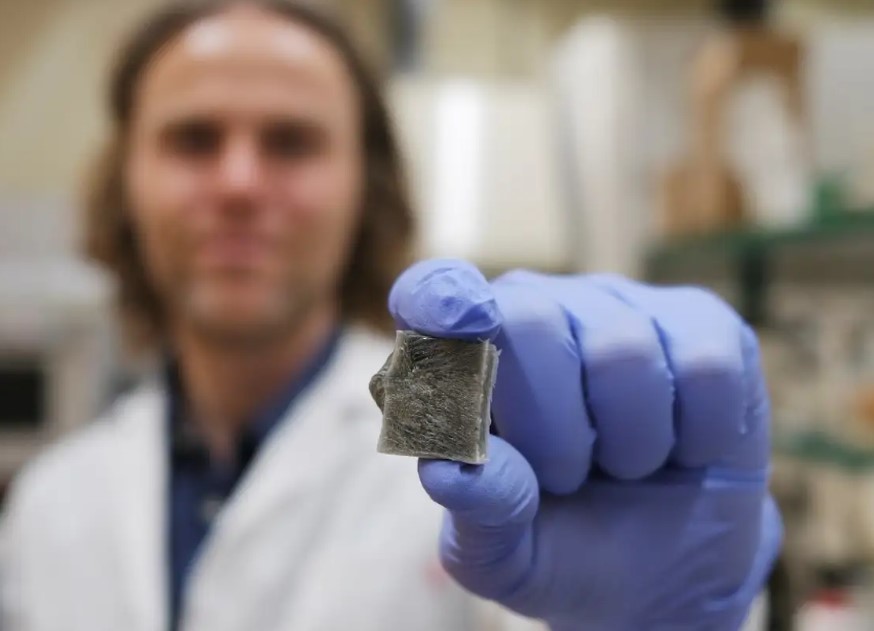An international research team has developed a groundbreaking material that could revolutionize the construction industry: a foam based on algae and nanotechnology that combines thermal insulation, electrical conductivity, and flame retardancy. Spain is significantly involved in this pioneering discovery through the ICMM of the CSIC.
The Vision of Smart Homes Becomes Reality
Imagine the walls of your house not only protecting against cold and heat but also providing light and warning you of a fire before it spreads. This futuristic vision is becoming a tangible reality thanks to the new material. It unifies properties previously considered incompatible, and what’s most surprising: its main component is a natural algae extract.
Alginate and MXenes: The Magic Formula
Researchers from the Institute of Materials Science of Madrid (ICMM-CSIC), in collaboration with renowned universities in South Korea, Italy, and the United States, have brought this multifunctional foam to life. It is made from alginate, a biopolymer derived from algae, and MXenes, a family of two-dimensional compounds with similar electrical properties to graphene.
The publication of this advance in the prestigious journal “Nanoscale Horizons” opens the door to a completely new generation of sustainable materials for construction and energy technology.
Sustainability Meets Efficiency: A Win-Win Situation
This discovery addresses an urgent global need: Approximately 25% of global energy consumption is dedicated to building climate control. Added to this are the significant costs of producing insulation materials. A material capable of thermally insulating, generating electricity, and simultaneously preventing fires not only saves valuable resources but also redefines the standards for sustainable architecture.
Bernd Wicklein, the lead author of the study, explains: “Our goal was to investigate how porosity influences both charge generation and heat storage.”
The Porosity of the Foam: A Key to Multifunctionality
The foam’s unique porous structure is crucial. It gives the material its exceptional properties: it is ultralight, resistant, and extremely insulating. But it’s not just about the thermal barrier: by incorporating MXenes, the foam also becomes an electrical conductor that can be seamlessly integrated into energy grids or smart devices. A wall built from this foam could literally power part of the house.
Integrated Fire Protection: Safety Without Compromise
A third crucial advantage of the new material is its integrated fire protection. A major problem in modern architecture is the flammability of many conventional thermal insulation materials. To compensate, toxic and environmentally harmful flame retardants are often used. This new material circumvents this dilemma from the ground up: alginate is inherently flame-retardant and biodegradable, eliminating the need for hazardous additives.
MXenes: The Flexible All-Rounders for Complex Architectures
The MXenes used in the formula are ultra-thin sheets of titanium and carbon. They not only conduct electricity like metals but are also easily dispersible in water and exhibit promising optical, thermal, and catalytic behavior. Their two-dimensional structure, only one to two nanometers thick, allows the material to bend without breaking—ideal for complex architectural integrations.
Furthermore, these foams offer an enormously important functional advantage: they can act as fire sensors when integrated into electrical systems. They can trigger alarms when sudden temperature increases or changes in their own conductivity are detected. This means they not only stand firm in the face of fire but can also warn us before it gets out of control.
Wicklein concludes: “This is a breakthrough that combines sustainability, safety, and energy efficiency. We have achieved a building material that generates electricity, protects against fire, and is also thermally insulating, representing a comprehensive improvement to the built environment.”




